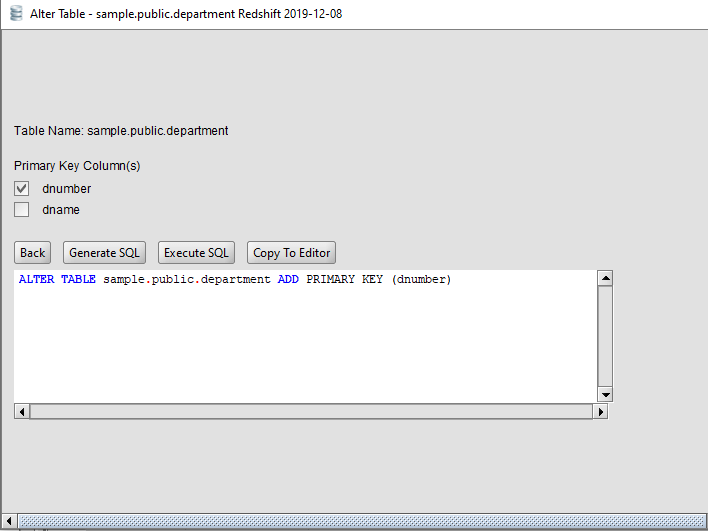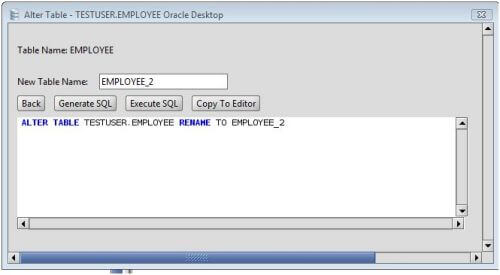

But turns out these are not Redshift problems. Lack of concurrency, slow queries, locked tables – you name it. Using best practices didn’t matter as much as moving fast to get a result.Īnd that approach is causing problems now.
#REDSHIFT ALTER TABLE RENAME TAKES FOREVER HOW TO#
Little initial thought went into figuring out how to set up the data architecture. In this article, we'll explore some best practices for configuring your Redshift cluster to achieve the best possible performance.Ī frequent situation is that a cluster was set up as an experiment and then that set-up grew over time. The author recommends setting up automated maintenance tasks to ensure these tasks are performed regularly.
#REDSHIFT ALTER TABLE RENAME TAKES FOREVER MOD#
While this type of result can be produced in a number of ways, it feels much cleaner using the MOD function to get a whole number remainder.Amazon Redshift is a popular cloud-based data warehousing solution that allows users to store and analyze large amounts of data quickly and efficiently. You could then define the training and test group using these simple numbers. One approach would be to divide each User ID by 3 using the modulo operation MOD(, 3) which would produce one of the 3 different remainders (0, 1, and 2) for each of the users.

So why is this valuable? Think about creating training and testing bins for an experiment that were a) replicable and b) more randomly selected than just the splitting my (ordered) dataset into two parts by a date cutoff. The MOD command in Redshift lets you perform this function MOD(3,2) will equal 1. 3/2 gives us a remainder of 1 - this would be the modulus. Modulo math is all about determining the remainder of dividing two numbers. Modulo math is usually reserved for more advanced programming languages but can be useful inside of SQL as well. SELECT catid, catname FROM category WHERE mod ( catid, 2 ) = 1 ORDER BY 1, 2 catid

There are so many other uses for row numbers when trying to clean or organize your data based on some ordinal parameter. If you want to see the most recent transaction for each customer for each product they’ve bought, just partition by both customer and the product, and your row numbering will restart with each new customer/product combination. Then filter your results to only include the rows that are in the position you care about - in this case, 1. Here we can assign an order to the transactions, grouped however you choose (in this case, by customer) and ordered however you choose (in this case, by transaction date descending, so the most recent orders for each customer are the same number: 1). The more elegant way is to use the ROW_NUMBER function. With no single date or date range to attach to all customers, we could find the most recent transaction date for each customer and then join the same transactions table to itself where the transaction date equals the customer’s most recent transaction date and the customer ID matches. We want the most recent purchase for each customer, even if it didn’t happen today. Think about customers with multiple purchases. SELECT salesid, sellerid, qty, ROW_NUMBER () OVER ( PARTITION BY sellerid ORDER BY qty asc ) AS row FROM winsales ORDER BY 2, 4 salesid


 0 kommentar(er)
0 kommentar(er)
